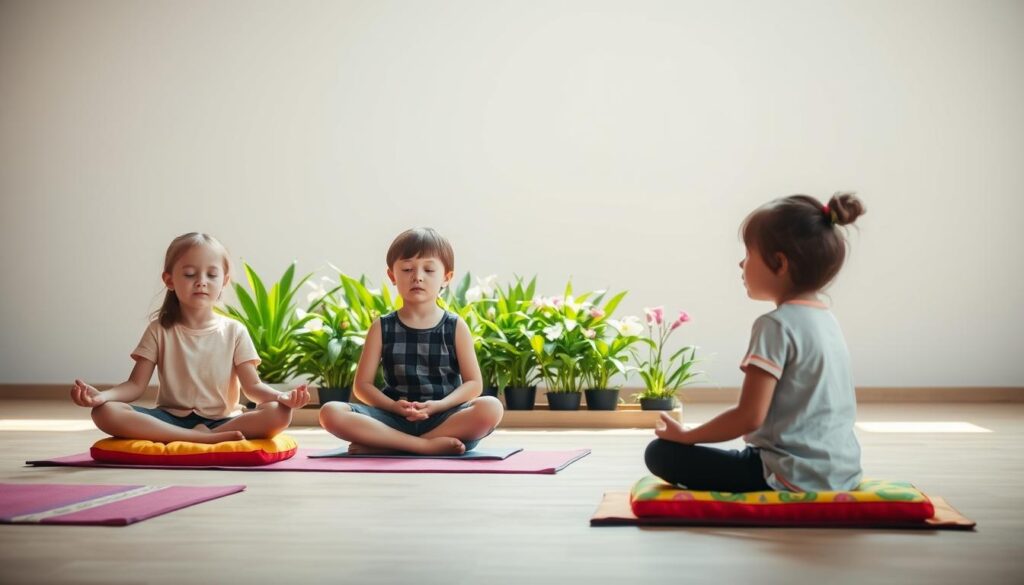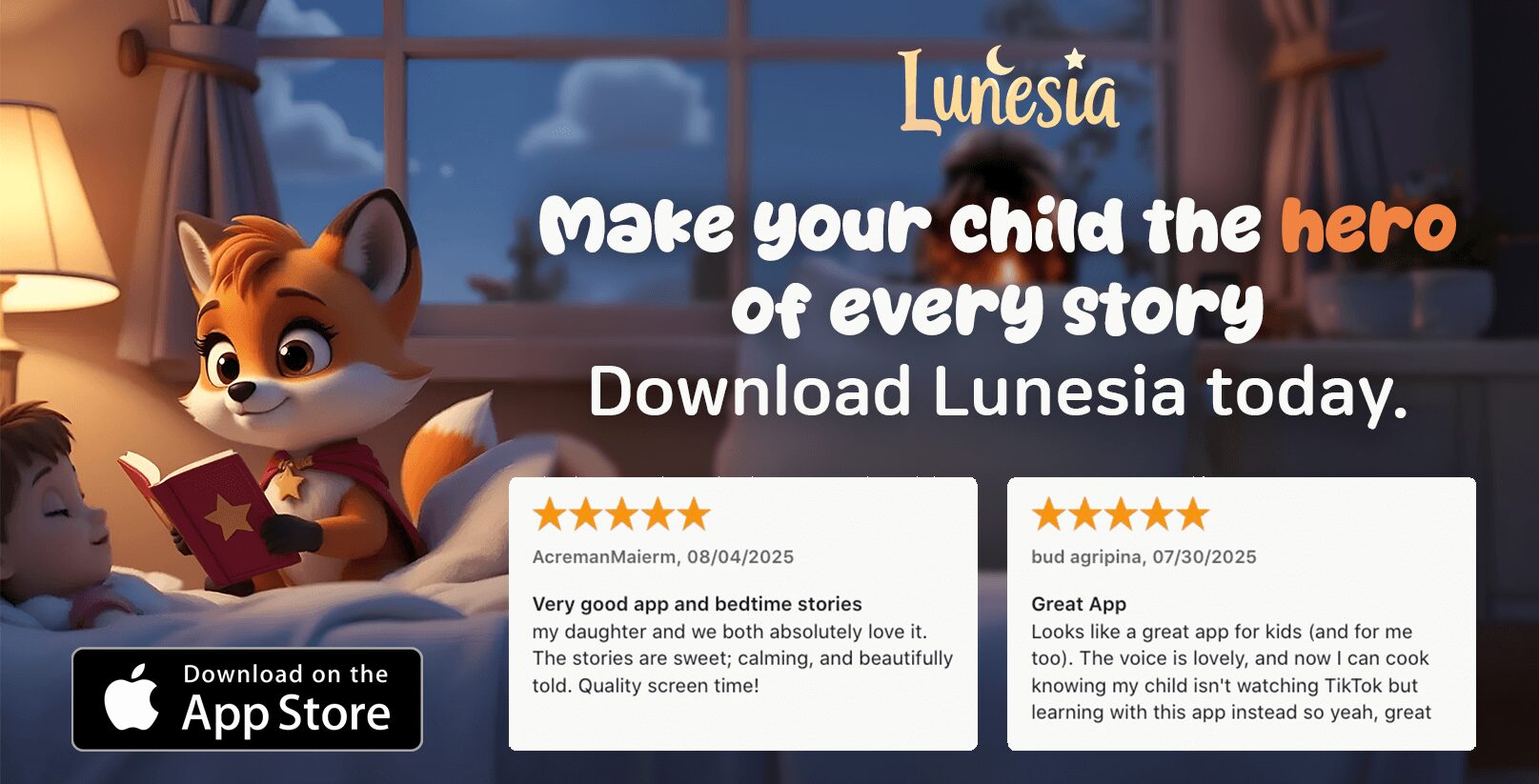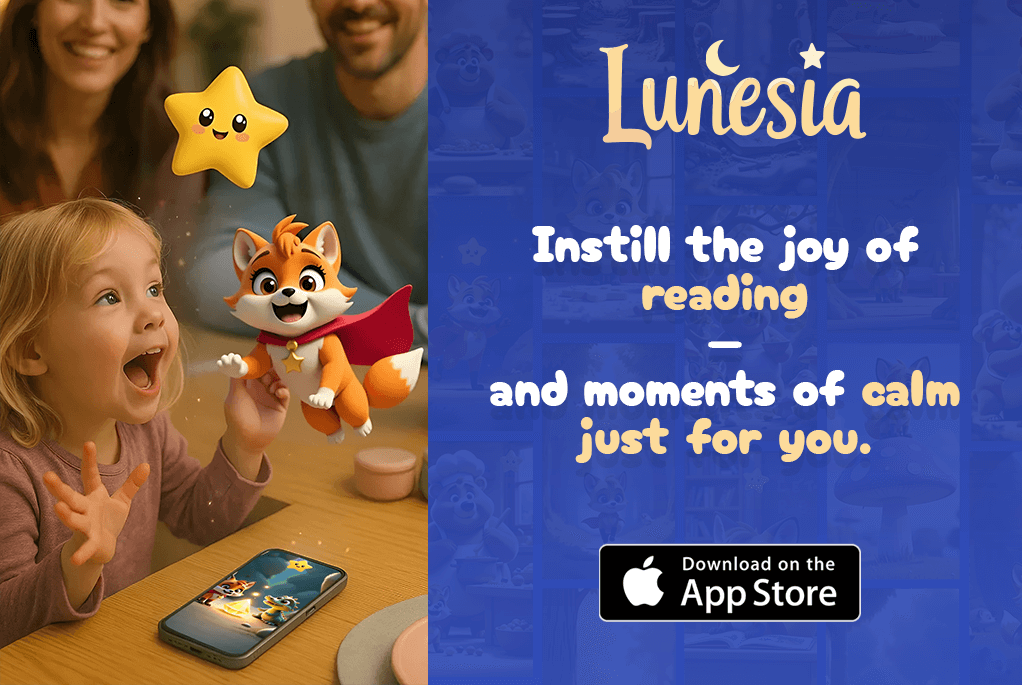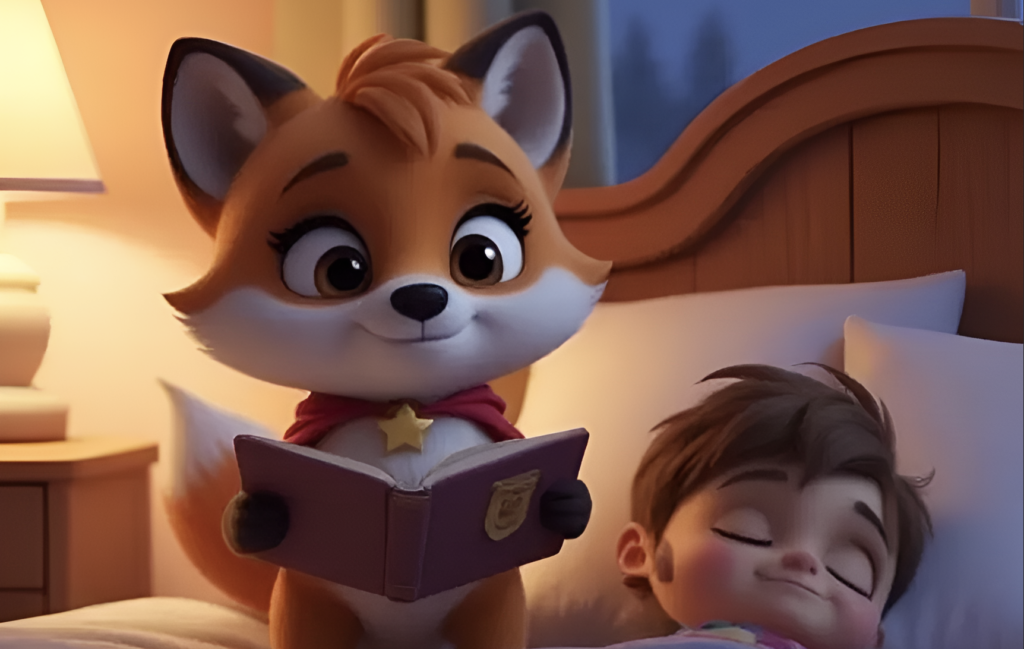As a parent, there’s nothing more concerning than seeing your child struggle with stress and emotions. I’ve been on a journey to find effective tools to help kids manage these challenges, and that’s when I discovered the power of mindfulness.
Two platforms caught my attention: Headspace with its structured meditation approach and Lunesia with its engaging interactive stories. Both are designed to help children develop essential life skills.
Throughout this guide, I’ll share my research findings and personal experience on how these platforms compare in helping kids achieve calm and focus. Whether you’re looking for an app to help your child with sleep, anxiety, or simply want to introduce mindfulness practices early, this comparison will help you make an informed decision.
The Growing Need for Children’s Mindfulness Tools
With the rise in stress levels among children, there’s a growing recognition of the importance of introducing mindfulness practices early in life. As a parent, I’ve seen how crucial it is to equip children with tools to manage their anxiety and stress.
Rising Stress Levels in Modern Children
Modern children face a myriad of stressors, from academic pressures to social challenges. Research indicates that these stressors can have a lasting impact on their mental health and well-being. It’s essential to introduce practices that help mitigate these effects.
Benefits of Early Mindfulness Practice
Introducing meditation and mindfulness practices early can have numerous benefits for children. It improves their working memory capacity, a key brain function crucial for cognitive development, particularly in areas like literacy and mathematics. Moreover, it enhances their ability to focus and develop metacognition – the awareness of their own learning processes.
- Regular mindfulness practice creates neural pathways that support emotional regulation and focus throughout childhood.
- Children who engage in meditation show improved working memory capacity, directly supporting academic skills.
- Mindfulness helps children develop metacognition, a powerful tool for self-directed learning.
- Early mindfulness practice builds resilience, empathy, and self-awareness in children.
- The brain‘s plasticity during childhood makes it an ideal time to introduce these practices.
For more information on tools that support children’s creativity and mindfulness, you can visit Lunesia’s apps for kids’ creativity.
Headspace Kids: A Comprehensive Overview

For parents seeking to introduce mindfulness practices to their children, Headspace Kids offers a comprehensive and engaging platform. This meditation app is designed to help children develop essential life skills such as calmness, focus, and kindness.
Core Features and Content Structure
The Headspace Kids app is structured around five key sections: Calm, Focus, Kindness, Sleep, and Wake Up. These categories cater to different aspects of a child’s emotional and psychological development.
Five Key Sections: Calm, Focus, Kindness, Sleep, Wake Up
The app’s content is divided into these sections to address various needs, from relaxation and concentration to emotional well-being and daily routines.
Age-Appropriate Content (5 and under, 6-8, 9-12)
Headspace Kids provides content tailored to three age ranges: 5 and under, 6-8, and 9-12 years. This ensures that the meditation sessions are appropriate for the child’s age and developmental stage.
Session Lengths and Accessibility
The app offers sessions ranging from 3 to 9 minutes, catering to different attention spans and schedules. Flexibility is one of the app’s strong points, allowing parents to choose sessions based on their child’s needs and their daily routine.
- Variety of session lengths (3-9 minutes) to fit different schedules and attention spans.
- Intuitive interface that allows older children to navigate and start sessions independently.
- Sessions can be downloaded for offline use, making them accessible during travel or in areas with limited connectivity.
- The consistent voice of the guide creates a sense of familiarity and trust.
Lunesia: Interactive Storytelling for Mindfulness
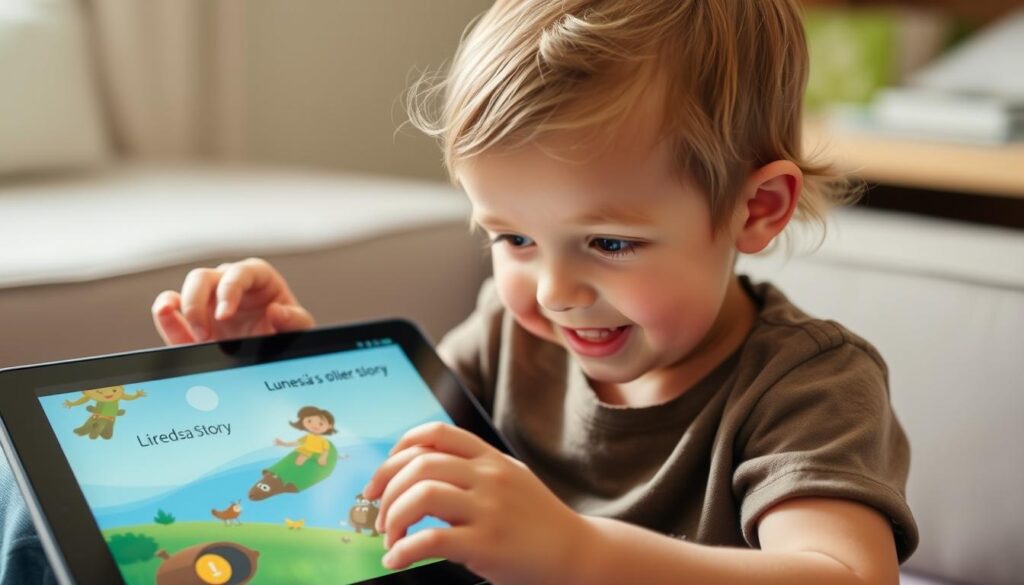
As we explore mindfulness tools for kids, Lunesia stands out with its innovative approach to interactive storytelling. This platform is designed to help children develop emotional regulation skills through engaging narratives.
Platform Approach and Methodology
Lunesia’s approach to mindfulness is centered around interactive stories that cater to various emotional themes and practical applications. The platform offers a diverse library of stories categorized by themes such as managing worry, building confidence, and finding calm, as well as practical applications like bedtime, school anxiety, and friendship challenges.
Key features include:
- Lunesia offers a diverse library of interactive stories categorized by emotional themes and practical applications.
- Each story incorporates multiple decision points where children actively choose how characters respond to situations.
Content Types and Engagement Strategy
The platform’s visual design strikes a balance between being stimulating enough to maintain interest and calm enough to support mindfulness objectives, avoiding the overstimulation typical of screen time. Lunesia’s engagement strategy is particularly effective because it includes follow-up activities that extend learning beyond screen time.
Some notable aspects of their engagement strategy include:
- Follow-up activities such as printable coloring pages that reinforce the story’s mindfulness concepts.
- Regular refreshes of content with seasonal stories and themes that connect mindfulness practices to holidays, school transitions, and other timely events in children’s lives.
By incorporating interactive storytelling and follow-up activities, Lunesia provides a comprehensive mindfulness experience for kids, making it a valuable tool for parents seeking to foster emotional regulation and calm in their children.
Headspace Kids vs Lunesia: Core Differences
When it comes to choosing between Headspace Kids and Lunesia, understanding their core differences is crucial for parents seeking the best mindfulness tool for their child. Both platforms offer unique approaches to fostering mindfulness in children, but they differ significantly in their methodologies and user experiences.
Meditation vs. Interactive Storytelling Approaches
The most striking difference between Headspace Kids and Lunesia lies in their approaches to mindfulness. Headspace Kids focuses on guided meditation sessions, providing a structured and calm environment for children to practice mindfulness. In contrast, Lunesia employs interactive storytelling, engaging children through animated narratives and choice-based interactions that make the mindfulness experience more dynamic. While Headspace Kids’ meditation sessions are designed to be calming and focusing, Lunesia’s interactive stories offer a more varied and engaging experience that can potentially lead to a stronger personal connection with the content.
User Interface and Child Engagement Comparison
The user interface of both apps also reflects their different approaches. Headspace Kids features a clean, minimalist design with limited interactive elements, creating a distraction-free environment that helps children focus on the meditation guidance. On the other hand, Lunesia’s interface is more visually rich and interactive, with animated characters and clickable elements that keep children actively engaged. You can explore Lunesia’s interactive approach further by visiting their website. While Headspace Kids requires less active supervision once children understand the format, Lunesia might need more initial parental guidance to navigate its interactive elements.
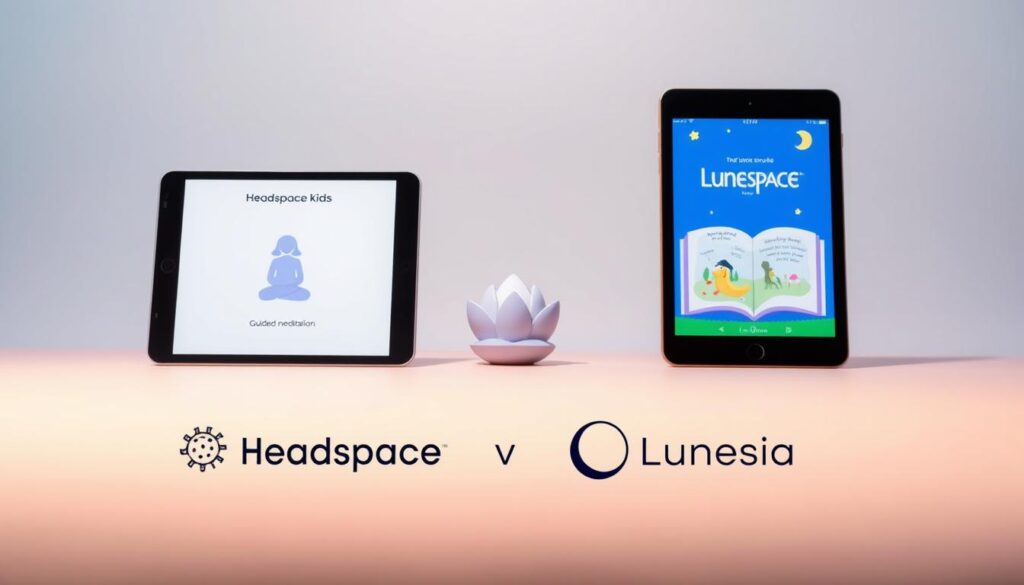
Real-World Results: Impact on Children’s Wellbeing
Real-world results show that mindfulness practices can greatly benefit children’s emotional health. As a parent, I’ve seen my child struggle with anxiety and stress, and using mindfulness tools has been a game-changer.
Sleep Improvement Outcomes
Both Headspace Kids and Lunesia have been instrumental in helping children manage their stress levels, which in turn has improved their sleep. By teaching kids techniques to calm their mind and relax their body, these platforms have contributed to better sleep quality. I’ve observed this firsthand with my child, who can now fall asleep more easily after using a Calm session.
Anxiety and Emotional Regulation Benefits
The impact of these mindfulness tools on children’s emotional wellbeing is significant. Headspace Kids’ approach helps children directly address their emotions, giving them a vocabulary for their feelings and techniques to manage them. On the other hand, Lunesia’s story-based approach allows children to explore emotional challenges through characters, making it easier for them to process difficult feelings. Both methods have been effective in helping kids develop emotional awareness and regulation skills.
Parents have reported that consistent use of these platforms has complemented professional treatment for anxiety disorders by providing daily practice of coping strategies. These tools have been invaluable in helping children manage their stress and develop crucial life skills that serve them well beyond childhood.
Scientific Backing: How These Tools Support Childhood Development
Studies have demonstrated that mindfulness meditation can have a profound impact on children’s brain development and emotional intelligence. As we explore the scientific backing behind tools like Headspace Kids and Lunesia, it becomes clear that their approaches are grounded in research that supports healthy childhood development.
The cognitive benefits of mindfulness practices for kids are multifaceted. Regular mindfulness practice has been shown to improve memory, focus, and metacognition in children.
Cognitive Benefits: Memory, Focus, and Metacognition
Mindfulness meditation helps children develop a stronger brain by enhancing their ability to focus and remember important information. By practicing mindfulness, kids can improve their cognitive functioning, leading to better academic performance and a stronger foundation for future learning.
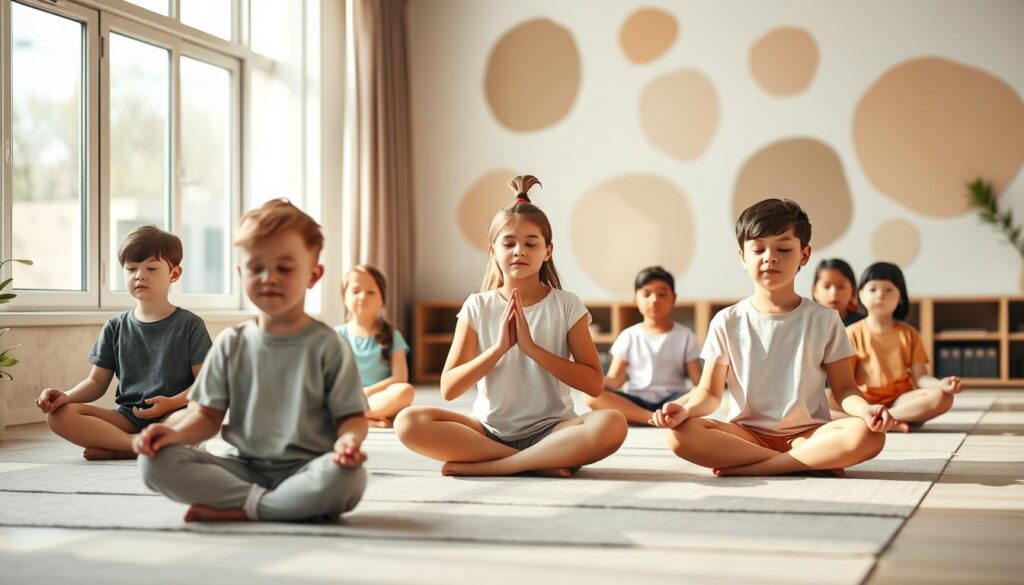
Emotional Intelligence and Resilience Building
Meditation has also been shown to help young minds develop a keen sense of emotional intelligence, enabling them to identify and manage their own emotions, as well as the emotions of others. This, in turn, fosters essential life skills such as resilience, empathy, and active listening. Some key benefits include:
- Developing the neural architecture for emotional intelligence through regular mindfulness practice.
- Demonstrating greater emotional regulation and quicker recovery from disappointments.
- Recognizing physical sensations associated with different emotions, allowing for early intervention.
By cultivating emotional intelligence and resilience, children are better equipped to navigate life’s challenges, from academic pressures to social conflicts, and develop a growth mindset around their emotions.
Practical Implementation: Integrating Mindfulness into Children’s Routines
Incorporating mindfulness into your child’s daily routine can be simpler than you think, and the benefits are numerous. As a parent, you’re likely looking for practical ways to help your child manage stress and anxiety while improving their overall wellbeing. Mindfulness practices, whether throughinteractive storytellingor meditation, can be seamlessly integrated into daily life.
Bedtime Routines and Sleep Support
Establishing a bedtime routine that includes mindfulness can significantly improve your child’s sleep quality. A short meditation session or a calming story can signal to your child that it’s time to sleep. Research has shown that mindfulness practices can help children relax and prepare for a restful night’s sleep. For instance, using guided meditations designed specifically for kids can help them wind down.
| Benefits | Techniques |
|---|---|
| Improved sleep quality | Guided meditations, calming stories |
| Reduced anxiety | Breathing exercises, body scan |
Managing School Stress and Anxiety
School can be a significant source of stress for many children. Mindfulness practices can help them manage this stress and perform better academically.Morning mindfulness sessionsof just 3-5 minutes before school can set a positive tone for the day. Additionally, teaching your child “spot meditations” – ultra-short breathing exercises that can be used throughout the day – can help them stay focused and calm during stressful situations like tests or social conflicts.
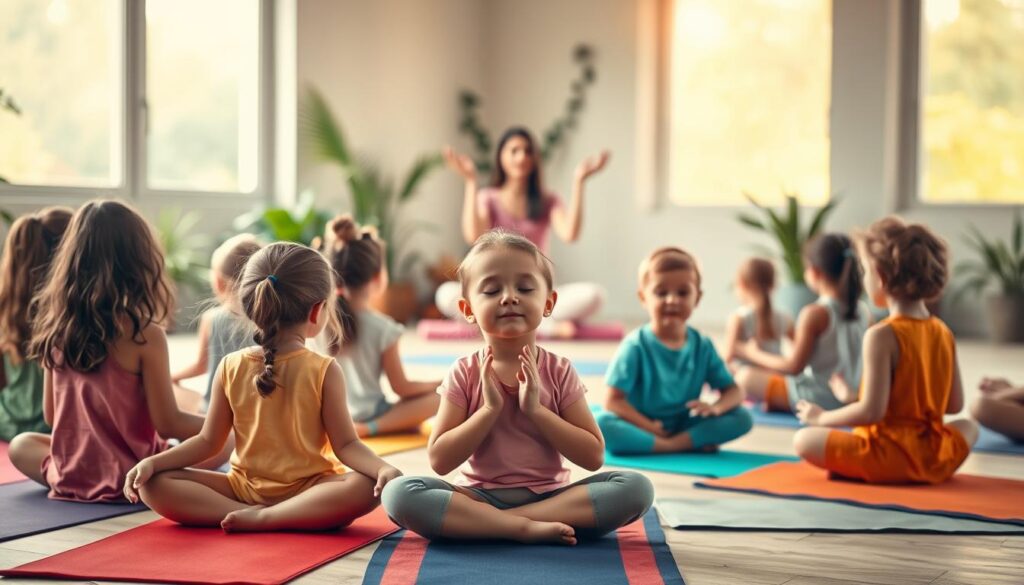
By incorporating mindfulness into your child’s daily routine, you’re not only helping them manage stress and anxiety but also equipping them with valuable life skills. Whether it’s through meditation or interactive storytelling, the key is to make mindfulness a consistent and enjoyable part of their daily life.
Conclusion: Choosing the Right Mindfulness Tool for Your Child
Choosing between Lunesia and Headspace Kids isn’t about which is better, but rather which is best suited for your child’s unique needs. After exploring both platforms, it’s clear that the right choice depends on your child’s temperament, age, and specific requirements.
Headspace Kids may be ideal for children who respond well to structure and can benefit from guided breathing exercises and body awareness. On the other hand, Lunesia works well for kids who engage more with interactive stories and may resist traditional meditation practices.
Many parents find value in using both tools for different purposes, such as Headspace Kids for bedtime routines and Lunesia for managing daytime stress. The key to success lies in consistency and parental participation. Starting with a free trial of both can help determine which one your child gravitates towards. Remember, mindfulness is a lifelong journey, and the goal is to help your child develop healthy ways to manage their emotions and inner world.
FAQ
What age range is suitable for meditation and mindfulness apps like Headspace Kids?
Most mindfulness apps, including those designed for children, are suitable for various age ranges. Typically, children as young as four or five can start benefiting from simple mindfulness exercises, while older children and teens can engage with more complex meditations.
How can I encourage my child to practice mindfulness regularly?
Establishing a consistent routine is key. Try incorporating mindfulness practices into daily activities, such as right before bed or during a morning calm period. Making it a fun, engaging experience, like using an interactive app, can also encourage regular practice.
Are there any benefits to using guided meditations for children?
Yes, guided meditations can be particularly helpful for children as they provide a gentle, soothing voice to follow, helping them focus and relax. This can be especially beneficial for kids who struggle with stress or have trouble calming down before sleep.
Can mindfulness and meditation apps really help with my child’s sleep issues?
Many parents have found that using bedtime meditation or calming exercises through mindfulness apps can significantly improve their child’s sleep quality. These tools can help signal to the child that it’s time to sleep, promoting a more restful night’s rest.
How do I choose the right mindfulness tool or app for my child?
Consider your child’s age, interests, and what type of content engages them. Some children might prefer interactive stories, while others might enjoy more traditional meditation practices. It’s also worth exploring the app’s content and ensuring it aligns with your values and parenting style.
Can these mindfulness tools be used by adults as well?
Absolutely! Mindfulness and meditation are beneficial for people of all ages. Many parents find that using these tools alongside their children not only helps their kids but also provides a wonderful opportunity for them to practice mindfulness together, promoting a sense of calm and connection.
